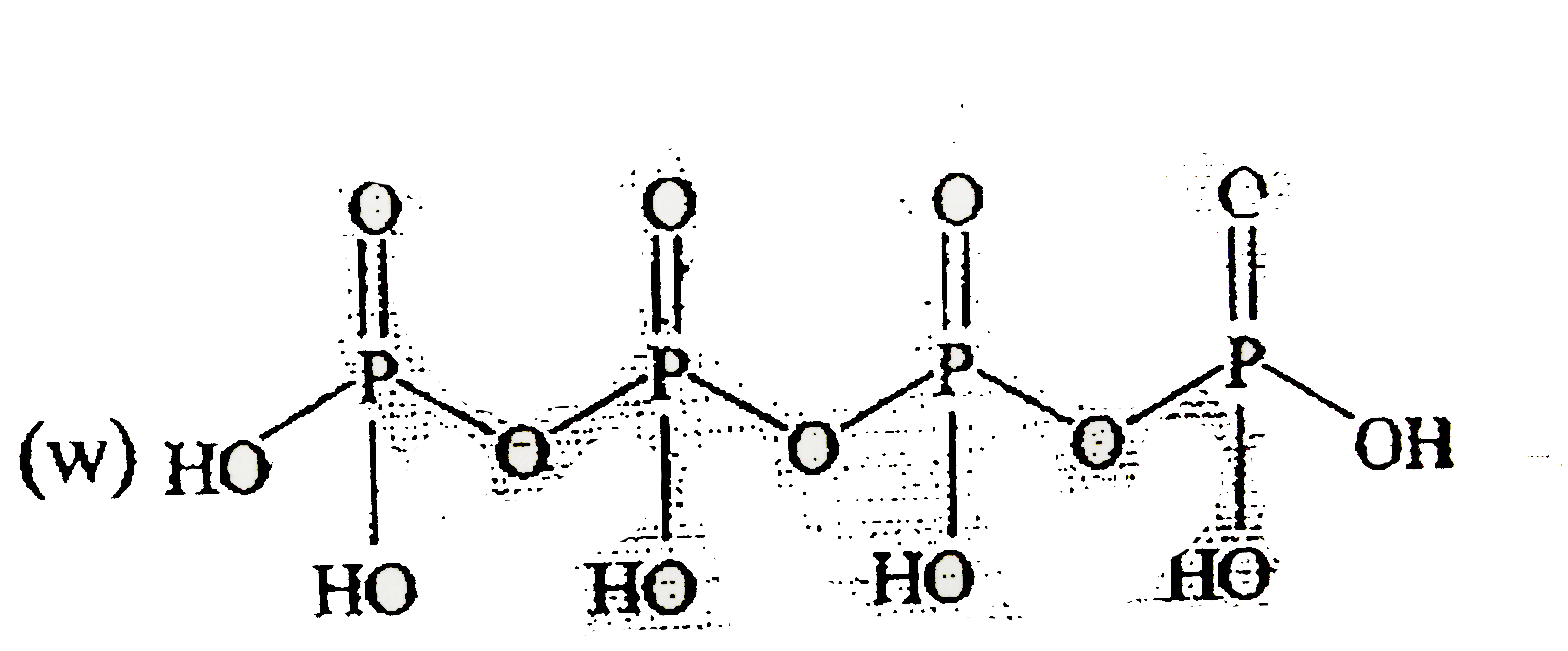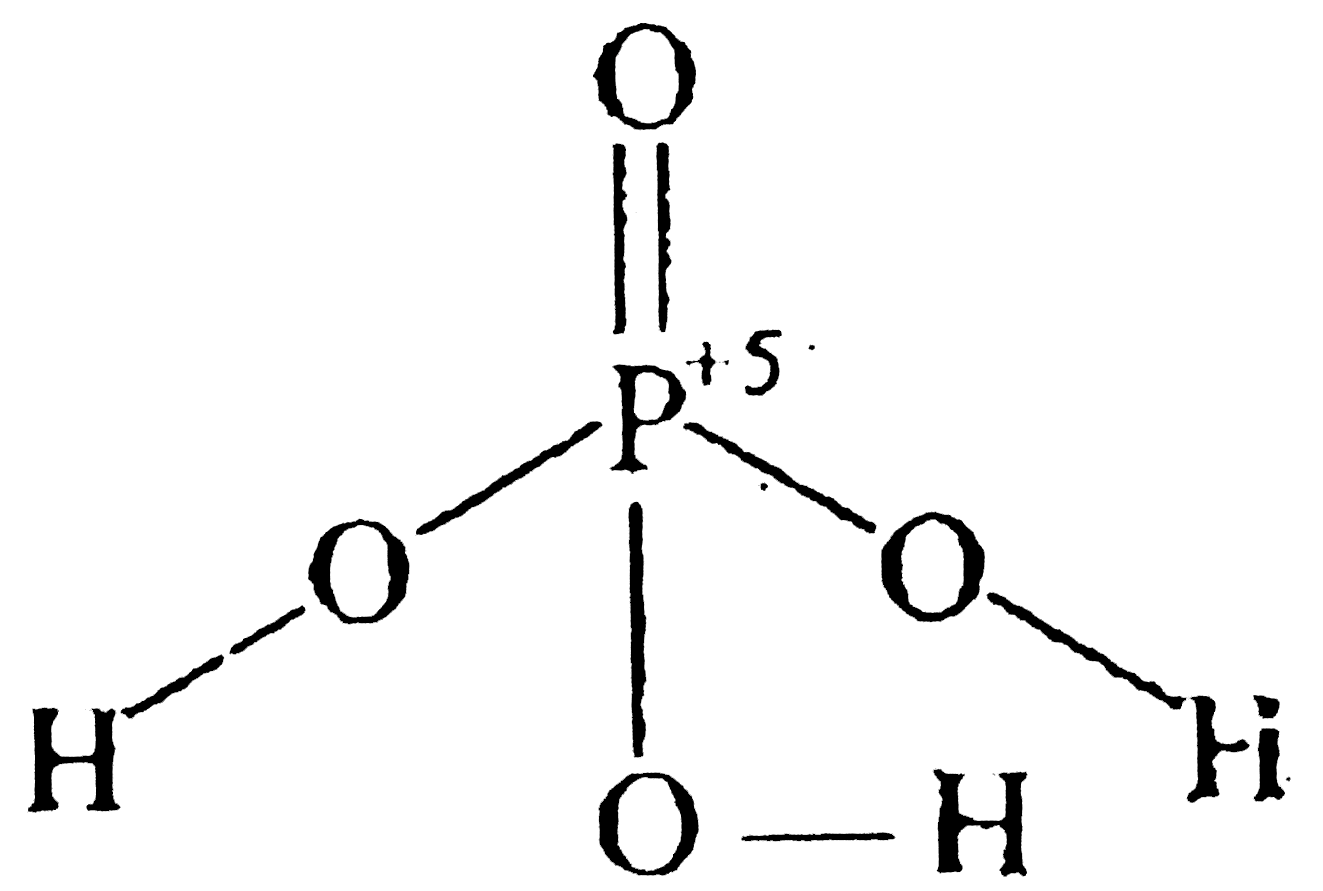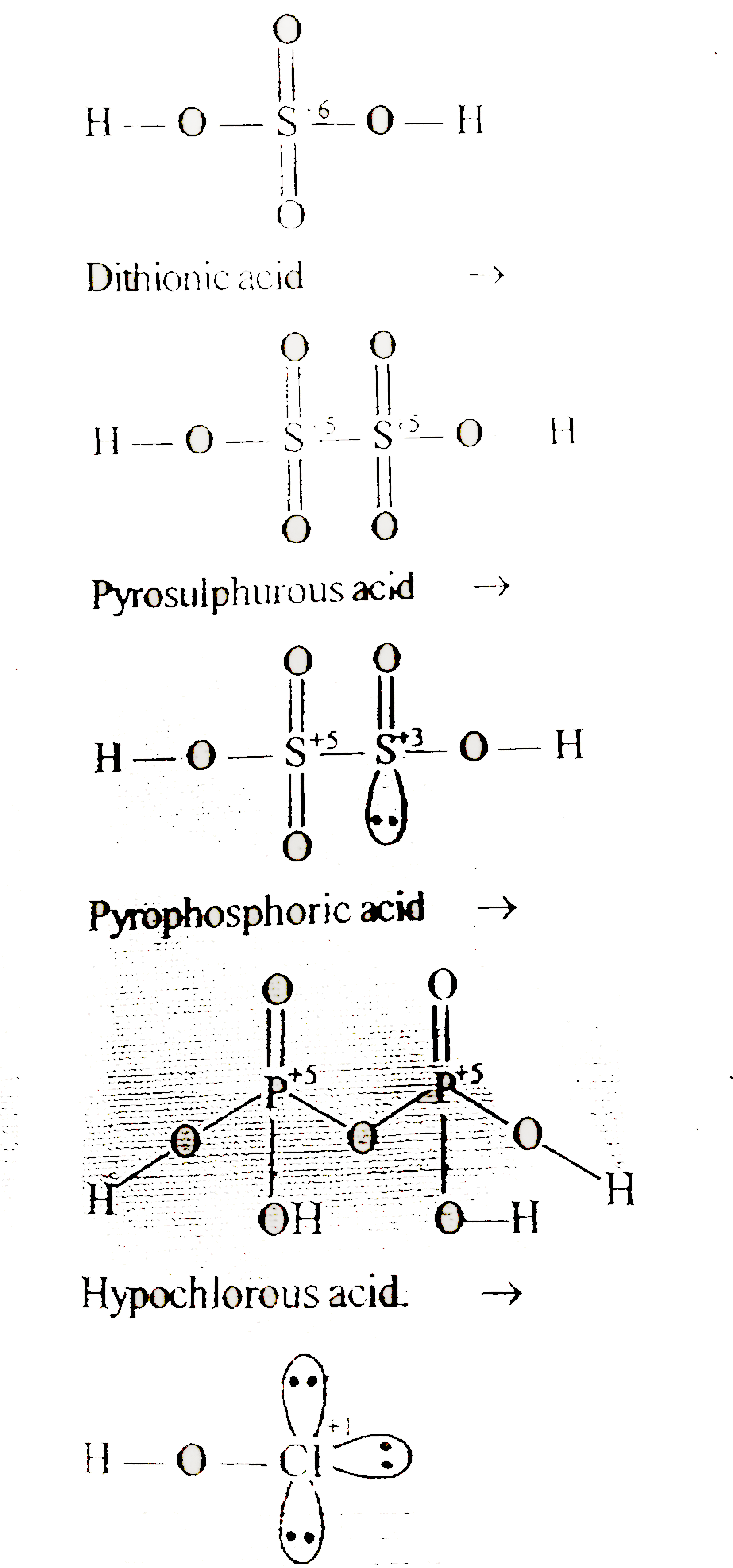InterviewSolution
This section includes InterviewSolutions, each offering curated multiple-choice questions to sharpen your knowledge and support exam preparation. Choose a topic below to get started.
| 6901. |
What is first order reaction?Determine the integrated rate equation for first order reaction RtoP |
|
Answer» <P> Solution :First order reaction :The rate of the reaction is proportional to the first power of the cocentration of the reactant R is called first order reaction .The rate of first order reaction. The rate of first order reaction `prop[R]^(1)` Where ,reaction R `to` P is first order reaction. The differential rate expression of first order reaction is as under Rate =`-(d[R])/(dt)=k[R]` ..........(i) `therefore(d[R])/([R])=-k dt`.......(ii) Intergrating this equation both side , In [R] =-kt+1 .......(iii) Here,I=Constant of integration When ,t= [R]=`[R]_(0)` .Where `[R]_(0)` is the initial concentration of the reactant.Put this value in eq. (iii) In `[R]_(0)=-kxx(0)+1` `therefore In [R]_(0)=I` .......(iv) If we put I =In `[R]_(0)` in equation (iii),we get In [R]=-kt+In `[R]_(0)`......(VA) `therefore` kt =In `[R]_(0)`-In [R] `therefore kt=In ([R]_(0))/([R])` `therefore k=(1)/(t)xxIn ([R]_(0))/([R])` .......(VB) Equation V(A) and V(B) both are integrated rate equation (VA) and (VB) can written in the form log [R]=`-(kt)/(2.303)+log [R]_(0)` ......(ViA) `K=(2.303)/(t)` log `([R]_(0))/([R])` .....(VIB) Note:Equation VA and VIA are stright equations .So,if we plot in `[R]tot` and log [R]`to` t we get a straight LINE with slope=-k and intercept equal to In `[R]_(0)` and log `[R]_(0)` Taking ANTILOG of equation (VA) at both ide ,we get [R]=`[R]_(0)E^(-kt)` .........(vii) |
|
| 6902. |
Which of the following plot correctly represents the variation of a concentration of a surfactant (e.g., sodium dodecyl sulphate) versus molar conductivity with regard to behavior art CMC |
|
Answer»
|
|
| 6903. |
Which is a condensation Polymer ? |
|
Answer» PVC |
|
| 6904. |
What is meant by the term coordination number in solids? What is the coordination number in a face centered cubic close packing structure? |
| Answer» Solution :The no.of ligands or doriar atoms to which the metal is DIRECTLY BONDED to it. In an ionic crystal, the number of oppositely charged ions SURROUNDING a ION under consideration 12. | |
| 6905. |
Which gas should not be collected over water because of its high solubility in water ? |
|
Answer» `H_(2)` |
|
| 6906. |
What are primary and secondary valency of cobalt in CoCl_(3).6NH_(3) ? |
|
Answer» `3,3` |
|
| 6907. |
Thermal decomposition of a compound is of first order. If 50% of the compound is decomposed in 120 minute, how much time it take for the 90% decomposition of the compound ? |
|
Answer» Solution :`K = (2.303)/(t) LOG.(a)/(a-x)` `K = (0.693)/(t_(½))` `K = (0.693)/(120) = 5.775 xx 10^(-3) min^(-1)` `t = (2.303)/(5.775 xx 10^(-3)) log.(100)/(10)` `t = 398.78 min` or `t = 23,9625` |
|
| 6908. |
Which of the following reactions can be used for the synthesis of an alkene |
|
Answer» Chugaev REACTION |
|
| 6909. |
The time required for 10% completion of a first order reaction at 298 K is equal to that required for its 25% completion at 308 K. If the value of A is 4xx10^(10)s^(-1), calculate k at 318 K and E_(a). |
|
Answer» Solution :`k_(298"K")=(2.303)/(t_(1))LOG""(a)/(a-0.10a)=(2.303)/(t_(1))log""(10)/(9)=(2.303)/(t_(1))(0.0458)=(0.1055)/(t_(1))" or "t_(1)=(0.1055)/(k_(298"K"))` `k_(308"K")=(2.303)/(t_(2))log""(a)/(a-0.25a)=(2.303)/(t_(2))log""(4)/(3)=(2.303)/(t_(2))(0.125)=(0.2879)/(t_(2))" or "t_(2)=(0.2879)/(k_(308"K"))` But `t_(1)=t_(2)." Hence, "(0.1055)/(k_(298"K"))=(0.2879)/(k_(308"K"))" or "(k_(308"K"))/(k_(298"K"))=2.7289` Now, applying Arrhenius equation, `log""(k_(308"K"))/(k_(298"K"))=(E_(a))/(2.303"R")((T_(2)-T_(1))/(T_(1)T_(2)))` `:.log(2.7289)=(E_(a))/(2.303xx8.314" JK"^(-1)" mol"^(-1))xx((308-298)K)/(298" K"xx308" K")` `0.4360=(E_(a))/(2.303xx8.314)xx(10)/(298xx308)" or "E_(a)=76.623" kJ mol"^(-1).` CALCULATION of k at 318 K `log k=logA-(E_(a))/(2.303"RT")=log(4xx10^(10))-(7623" JK"^(-1)" mol"^(-1))/(2.303xx8.3174" JK"^(-1)"mol"^(-1)xx318" K")` `=10.6021-12.5843=-1.9822` or `k=" Antilog "(-1.9822)=" Antilog "(bar(2).0178)=1.042xx10^(-2)s^(-1).` |
|
| 6910. |
Which of the following is not correct for enzyme catalysis? |
|
Answer» The enzyme ACTIVITY is maximum at optimum pH which is between 5-7. |
|
| 6911. |
What will be the conjugate bases for the Bronsted acids? HF,H_2SO_4 and H_2CO_3? |
| Answer» SOLUTION :CONJUGATE BASES: `F^(-),HSO_4^(-),HCO_3^-` | |
| 6912. |
Which among the following statements are true for the complex [Co(NH_(3))_(6)][Cr(CN)_(6)] (i) It is a non-electrolyte (2) The magnitude of the charge on each complex ion is 3 (3) The complexwill not conduct currect (4) The complex will exhibitcoordination isomerism (5) The magnitude of the charge on each complex ion is 1 |
|
Answer» 1 and 4 |
|
| 6913. |
Which of the following is correct graph between Probability density spi_((r))^(2) vs radial distance of electron (r) form nucleus for 3 s ? |
|
Answer»
|
|
| 6914. |
Which of the following compounds react with sodium bicarbonate ? |
|
Answer» Phenol picric acid > carbon acid > phenol > ethanol > acetylene 
|
|
| 6915. |
Which type of aldehydes undergo aldol condensation. Give an example. |
|
Answer» Solution :Aldehydes or ketones that contain one or more a-hydrogen atoms UNDERGO ALDOL condensation. (i) Acetaldehyde - `CH_(3)CHO` (ii) ACETONE - `CH_(3)COCH_(3)` |
|
| 6916. |
The resistance and resistivity of a conductor is given by |
|
Answer» `RHO = Rl/A` |
|
| 6917. |
The values of dipole moment are same for- |
|
Answer»
|
|
| 6918. |
Which statement are corrrect in the case of acetaldehyde and acetone? |
|
Answer» Both react with `NaHSO_(4)` |
|
| 6919. |
The species with spin only magnetic moment of sqrt(24) BM is: |
|
Answer» `[CoF_(3)(H_(2)O)_(3)]` |
|
| 6920. |
Which of the followign is (are) true for first order reaction? |
|
Answer» Rate of reaction is fastest at the beginning of the reaction. |
|
| 6921. |
Which one of the following is incorrect for ideal solution |
|
Answer» `DeltaG_(mix)=0` `DeltaH_("mix")^(@)=0,DeltaV_("mix")=0,DeltaG_("mix")lt0` So 1 ST option is incorrect. |
|
| 6922. |
Using the data (all values are in kcal per mole at 25^(@)C ) given below, calculate the bond energy of C-C and C-H bonds. DeltaH_("combustion")^(0)("ethane")=-372 DeltaH_("combustion")^(0)("propane")=-530 DeltaH^(0)"for" C ("graphite") to C(g)=172 Bond energy of H-H=104 DeltaH_(f)^(0)ofH_(2)O(l)=-68 DeltaH_(f)^(0)of CO_(2)(g)=-94 |
|
Answer» SOLUTION :The following are the given thermochemical reactions: (i) `C_(2)H_(6)(g)+3(1)/(2)O_(2)(g) to 2CO_(2)(g)+3H_(2)O(L),DeltaH^(0)=-372` (ii) `C_(3)H_(8)(g)+5O_(2)(g) to 3CO_(2)(g)+4H_(2)O(l), DeltaH^(0)=-530` (iii) `H_(2)(g)+(1)/(2)O_(2)(g) to H_(2)O(l), DeltaH^(0)=-68` (iv) `C(s)+O_(2)(g) to CO_(2)(g), DeltaH^(0)=-94` Let us first calculate the heat of formation of `C_(2)H_(6)` and `C_(3)H_(8)` from which we shall calculate the bond energy of C-C and C-H bonds. `2C(s)+3H_(2)(g) to C_(2)H_(6)(g), DeltaH^(0)=?` and `3C(s)+4H_(2)(g) to C_(3)H_(8)(g), DeltaH^(0)=?` Appling the enspection method, i.e., [- Eqn. (i)+3xxEqn. (iii) +3xxEqn. (iv)], we get, `3C(s)+4H_(2)(g) to C_(3)H_(8)(g), DeltaH^(0)=-24` `[DeltaH^(0)=-(-530)+4(-68)+3(-94)=-24]` Calculation of bond energy: Now we have, `2C(s)+3H_(2)(g) to C_(2)H_(6)(g), DeltaH^(0)=-20` For reactants : Heat of atomisation of 2 moles of C atoms `=2xx172` Heat of dissociation of 3 moles of H-H bonds `=3xx104` For products : Heat of formation of 1 mole of C-C bonds `=x("say")` Heat of formation of 6 moles of C-H bonds `=6y("say")` On adding, we get `DeltaH^(0)` of formation of `C_(2)H_(6)` . `2xx172+3xx104+x+6y=-20` or `x+6y=-676` ....(1) Again, we have, `3C(s)+4H_(2)(g) to C_(3)H_(8)(g),DeltaH^(0)=-24` For reactants : Heat of atomisation of 3 moles of C atoms `=3xx172` Heat of dissociation of 4 moles of H-H bonds `=4xx104` For products : Heat of formation of 2 moles of C-C bonds `=2x` Heat of formation of 8 moles of C-H bonds `=8y` On adding, we get, `3xx172+4xx104+2x+8y=-24` or `2x+8y=-956` ....(2) From eqns. (1) and (2), we get, `x=-82` and `y=-99` `:. C-C bond energy =82 "kcal"` `C-H bond energy `=99 "kcal"` |
|
| 6923. |
Which has the same electronic configuration as of inert gas: |
|
Answer» `AG^(3+)` |
|
| 6924. |
What do we obtain when we treat aniline with bromine water ? |
|
Answer» |
|
| 6925. |
Which of the following is correct for the complex [NiBr_(2)(PPH_(3))_(2)] ? |
|
Answer» It is SQUARE planar with ONE unpaired electron. 
|
|
| 6926. |
Which is leaving group in the hydrolysis of CH_(3)COOC_(2)H_(5) ? |
|
Answer» `C_(2)H_(5)^(+)` |
|
| 6928. |
Which one is the most acidic compound? |
|
Answer»
|
|
| 6929. |
(W) 4H_(3)PO_(4)overset(-3H_(2)O)rarr Compound 'X' How may P-O-P linkage are present in compound 'X' ? (x) How many following compound shows H-bonding? H_(3),BO_(3),HF,CiF_(3),H_(2)S,HCl, chlora, H_(2)O_(2) (y) How many following compound exist in solid form in nature? Br_(2),I_(2),H_(3)S,SiO_(2), Carborundom, Mercury, Black phosphorous (z) How many following compounds has/have +5 oxidation state? Phosphoric acid, Sulphuric acid, Dithionic acid, Pyrosulphurous acid, Pyrophosphroic acid, Hypochlorous acid. [If w=1,x=2,y=4,z=3, write your answer as 1243 in OMR sheet] |
Answer» Solution :(W)  TOTAL P-O-P linkage are=3 (x) `H_(3)BO_(3),HF` and `H_(2)O_(2)` shows H-bonding (y) `Br_(2)`, Mercury-liquuid `H_(2)S`, =gas `I_(2),H_(3)BO_(3),SiO_(2)`, Carbourundom, Balck phosphorous-solid (z) Phosporic acid.  
|
|
| 6930. |
Which plastic is obtained from CHCl_(3) as follows . CHCl_(3)underset(SbF_(3))overset(HF)rarrXoverset(800^(@)C)rarrYoverset("polymerisation")rarr Plas tic . |
|
Answer» Bakelite |
|
| 6931. |
Which adsorbents are used for removing moisture and controlling humidity ? |
|
Answer» Silica |
|
| 6932. |
Which among the following is a tertiary nitro compound? |
|
Answer»
|
|
| 6933. |
Which of the followig reagents are used for the detection of acetate and oxalate ions respectively? |
|
Answer» `BaCl_(2) and CaCl_(2)` |
|
| 6934. |
Which of the following is used widely in the manufacture of lead storage battery |
|
Answer» Arsenic |
|
| 6935. |
Vapour pressure of a solution of 5g of non-electrolyte in 100g of water at a particular temperature is 2985 N//m^(2). The vapour pressure of pure water is 3000N//m^(2). The molecular weight of the solute is |
| Answer» Solution :`(P^(@)-P_(s))/(P^(@))=((W_(2))/(M_(2)))/((W_(1))/(M_(1)))=(300-2985)/(3000)=((5)/(M_(2)))/((100)/(18))` or `M_(2)=180` | |
| 6936. |
What is the product obtained when C_(6)H_(5)CH_(2)NH_(2) reacts with HNO_(2)? |
|
Answer» |
|
| 6937. |
The total number of alpha and beta particles emitted in the nuclear reaction ._(92)^(238)U rarr ._(82)^(214)Pb is |
|
Answer» `alpha = 6, beta = 2` Total = 8 |
|
| 6938. |
Which one of the following corresponds to a photon of highest energy? |
|
Answer» `lamda=300nm``v=3xx10^(8)s^(-1)` `E=(hc)/(lamda)=(6.626xx10^(-34)xx3xx10^(8))/(300xx10^(-9))` `=6.626xx10^(-19)J` (b) `v = 3 xx 10^(8) s^(-1)` `E = hv = 6.626 xx 10^(-34) xx 3 xx 10^(8) = 1.9878 xx 10^(-25)` J (c ) `barv=30cm^(-1)=30xx10^(2)m^(-1)` `E=hcbarv=6.626xx10^(-34)xx3xx10^(8)xx30xx10^(2)` `=5.9634xx10^(-22)J` (d) `E=6.626xx10^(-27)J` |
|
| 6939. |
Which of the followingis notprecipitate by H_(2)S inpresence of NH_(3) |
| Answer» Answer :d | |
| 6940. |
XeF_2 on hydrolysis yeild.......... |
|
Answer» `XeOF_(2)` |
|
| 6941. |
What are the uses of potassium dichromate? |
|
Answer» Solution :`K_(2)Cr_(2)O_(7)` is used (i) as a strong oxidising agent (ii) in dyeing and printing (III) in leather tanneries for chrome plating (iv) in QUANTITATIVE analysis for the estimation of IRON COMPOUNDS and iodides |
|
| 6942. |
Which among the following on dehalogenation will give trans alkene: |
|
Answer» `{:("BR"),("|"),(H_(3)C-C-H),("|"),(H_(3)C-C-H),("|"),("Br"):}` |
|
| 6943. |
Which of the following ions, will have maximum hydration energy |
|
Answer» `SR^(2+)` |
|
| 6944. |
Which of the following is a use of alum |
|
Answer» Making EXPLOSIVES |
|
| 6945. |
Which of the following are most reactive compounds for nucleophilic acyl substitution? |
|
Answer»
|
|
| 6946. |
Transition elements are d- block elements Write any four characteristic properties of transition elements. |
| Answer» Solution :TRANSITION ELEMENTS show variable OXIDATION states. They FORM complexes or coordination compounds. Many of the transition metals and their compounds show catalytic activity. They GENERALLY form coloured compounds. | |
| 6947. |
Which of the following oxide is known as mixed anhydride ? |
|
Answer» `SO_(2)` |
|
| 6948. |
Which Is a tribasic acid : |
|
Answer» Malonic acid |
|
| 6949. |
What will be the total number of possible isomers of the compound: [Cu^(II)(NH_(3))_(4)](Pt^(II)Cl_(4)] |
|
Answer» |
|
| 6950. |
Write the structure of the major organic product in each of the following reactions :CH_(3)CH=C(CH_(3))_(2)+HBr rarr |
| Answer» SOLUTION :`CH_(3)-CH_(2)-OVERSET("Br ")overset("| ")underset(CH_(3))underset("|")("C ")-CH_(3)` | |